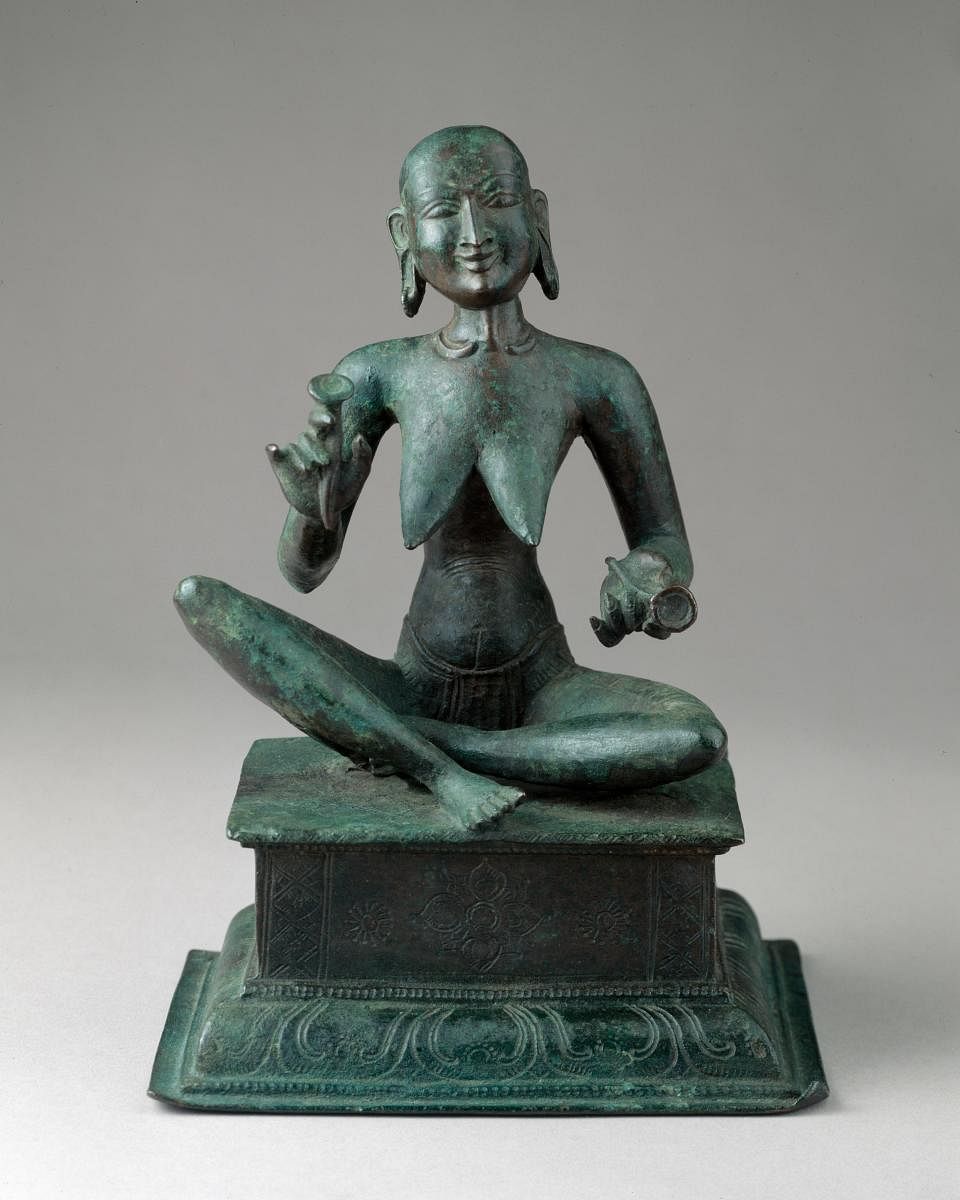
Seated on a pedestal, a woman is depicted mid-song, with a pair of cymbals in her hands, singing devotional hymns to the deity Shiva in a 13th-century Chola copper-alloy statue. The sixth-century Tamil Shaiva poet-saint, Karaikkal Ammaiyar, whose statue this is, is worshipped to this day.
Most of what is known about Ammaiyar doesn’t come from her own poetry but rather from the Periya Puranam, which details the lives of the 63 Nayanar Shaiva saints who lived between the third and eighth centuries. It was written in the 13th century, nearly 500 years after Ammaiyar lived, by Sekkizhar (or Chekkilar), a male minister in the Chola court. The Nayanars began to be worshipped only from the 10-11th century onwards when they were mentioned in standardised lists and biographies and depicted in stone and bronze.
Nayanars were portrayed as coming from an array of socio-economic backgrounds. This may have contributed to the widespread popularity of saint worship by the 13th century, which continues to this day. Bronzes such as these further lent legitimacy to these figures, as they visually expressed and popularised the worship of saints and their accounts written originally in elite courtly contexts.
The Periya Puranam details that Ammaiyar was born as Punitavati to a wealthy merchant Paramadattan in Karaikal, which was a minor port and centre for trade. The account describes her as a beautiful young woman, who was released from her marriage after her husband recognised that she was favoured by Shiva.
Once Punitavati was freed from her marriage, she found that her physical beauty was unnecessary, and so she prayed to Shiva to allow her to worship him, unhindered by beauty. In response, Shiva granted her wish and turned her into a demon-like figure, with dried-out skin, wild hair, drooping breasts and protruding veins. It was only thereafter, that she came to be known as Karaikal Ammaiyar, meaning mother (ammai) of Karaikkal.
This is used to explain her independence from a male Nayanar — she is the only one of the three female Nayanars who is. Ammaiyar is also the only female Nayanar whose poems survive. These are not autobiographical and instead dwell on the beauty and prowess of Shiva, whom she describes dancing in cemeteries and forests on the outskirts of Alankatu, where she later lived.
What is intriguing is whether the hagiography preserves any traces of who Ammaiyar was before she began to compose poems to the deity, or whether it should be seen as an attempt by the courtly writers to “fit” an unorthodox author from centuries ago into the social context of their own time.
Chola period sculptures that depict Ammaiyar can be found in the Metropolitan Museum of Art in New York, the Nelson-Atkins Museum of Art in Kansas and the Government Museum in Egmore.
Discover Indian Art is a fortnightly column that delves into fascinating stories on art from across the sub-continent, curated by the editors of the MAP Academy. Find them on Instagram as @map_academy